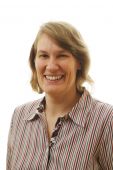Tidligere arrangementer - Side 92
Dr. Eivind Valen, Group Leader at the Computational Biology Unit of the University of Bergen, will present the lecture "Searching for function in the dark matter of the genome."
Nicolai Stammeier (Oslo) will give a talk with title: The inner structure of boundary quotients of right LCM semigroups
Abstract: In joint work with Roberto Conti, Stefano Rossi, and Valeriano Aiello, we use semidirect products built from algebraic dynamical systems to model right LCM semigroups to study various structural aspects in connection with a selection of distinguished subalgebras of the associated boundary quotients. Our two guiding examples are integral dynamics as considered in work of Barlak - Omland - Stammeier, and exact injective group endomorphisms of discrete abelian groups with finite cokernel as studied by Cuntz and Vershik.
By Erik Bonsdorff, professor of marine biology at ?bo Akademi University, Finland
Luc Blanchet, Directeur de Recherche au C.N.R.S., Institut d'Astrophysique de Paris
IOB hosts a mini-seminar on molecular changes in aging with two invited speakers from the Center for Healthy Aging at the University of Copenhagen.
IOB hosts a mini-seminar on molecular changes in aging with two invited speakers from the Center for Healthy Aging at the University of Copenhagen.
Eric Schaanning (Norges Bank) gives a lecture with the title: Interbank contagion and systemic risk: How robust are estimates?
Welcome to the next Oslo University Hospital (OUH) Research Seminar: "Individualised Cancer Treatment"
By Kathleen Pribyl, associate fellow at the Climatic Research Unit, University of East Anglia, Norwich, UK
Dr. Ga?tan Burgaud, Assistant Professor, Microbial Ecology and Biodiversity Laboratory, University of Brest, France
Research gate: https://www.researchgate.net/profile/Gaetan_Burgaud
Dr Burgaud is also the opponent for the PhD defense of Maryia Khomich on Thursday 5 October.
Michail Sitkovsky, Professor and Director of the New England Inflammation and Tissue Protection Institute at the Northeastern University College of Science, Boston, USA, will give a guest lecture titled, 'Anti-Hypoxia/HIF-1alpha and anti-A2A-Adenosinergic Co-adjuvants to enable the rejection of the most therapy-resistant tumors'
Christa Gall, Dark Cosmology Centre, Niels Bohr Institute, University of Copenhagen
Guest lecture by resarcher Maarit Lehti, PhD, LIKES Research Centre for Physical Activity and Health, Jyv?skyl?, Finland.
Vibor Jelic, Ruder Boskovic Institute, head of the Laboratory for astroparticle physics and astrophysics.
By Clint Perry, Cognitive Neuroethologist from Queen Mary University, London, UK
Dr. Christopher Yau, Reader in Computational Biology based in the Centre for Computational Biology at the University of Birmingham will give a lecture titled, "Probabilistic modelling approach for pseudotime estimation in single cells and populations."
Adam S?rensen (UiO) will give a talk with title: C*-stable groups.
Abstract: In this talk we will look at when group C*-algebra have stable relations, which loosely speaking means that any almost representation of the group in a C*-algebra will be close to an exact representation. A particularly interesting case is if we assume the C*-algebra is finite dimensional. I will mostly discuss a collection of examples. The talk is based on ongoing joint work with S?ren Eilers and Tatiana Shulman.
By Andries Richter, assistant professor at Wageningen University & Research
Benjamin Racine, Postdoc, ITA
Amaury Triaud, University of Birmingham



/2017/shing-chan-tak.jpg?alt=listing)